I’ve already done several photo-postings about that walk Alastair and I did, from Blackheath to the Dome. There was that posting that rhymed. There was a cat. There was that amazing photo of the River that Alastair did. There was Lord Nelson. Well, time for some photos taken at our Official Designated Destination. Our actual first thing we decided to visit which would supply me with plenty of photo-opportunities, after we had met up at Blackheath Station, was this:
Beyond the Point Hill sign is The Point. We got to that by walking up … well, here are a couple of maps. On the left, how to get from Blackheath Station to The Point. And on the right, why you would bother, the point of The Point being what you can see from The Point:
The point of this first photo is to explain why the photos that follow are the sort that you might not consider to be that great:
This was not the first photo I photoed from The Point, but it makes my point, which is that what you can see from The Point is most of it a really long way away. The photos that follow are all very zoomy.
For me the most striking Things to be seen were the Docklands Towers. There are now quite a lot of them, compared to how many there were when I vaguely recall last visiting this spot.
First, two views of the entire Docklands Cluster:
And next up, a couple of close-ups of this same cluster:
The light could have been better, but it was what it was.
I really like how Docklands is turning out. One or two of the towers there have a bit of distinction about them, especially One Park Drive. But the sum is greater than the parts, I think. This is because almost all these towers go straight up. There are no Gherkins, Cheesegraters, Scalpels, Walkie-Talkies or Cans of Ham. Just gravity following towers done in the most efficient way possible. And the result is a classic spontaneous order of skyscrapers, all done in the modern vernacular. Without gravity, there’d be little logic. But with gravity, and without the starchitectural urge to defy it, it is all starting to look rather impressive. I like the City, with all its weirdness and eccentricity, but I’m glad London also has a classic skyscraper cluster in the form of Docklands. It can only grow and only get more impressive.
I like the idea of people looking at photos of it, and saying: Where’s that? “London.” London? I’d never have guessed.
Off to the right, we can see the Dome:
The stuff to the left of the Dome is the muddle on the other side of the River, to the east of Docklands. The sooner that muddle gets gobbled up by the Docklands Tower Cluster the better. To the right of the Dome, south of it, on the Greenwich Peninsular, there’s already more stuff rising up, with more to come.
Off to the left, all the eccentricity of central London is duly on show, but even further away:
Let’s take closer-up looks at bits of that:
The photo on the right is a different photo. But the image on the left is a detail cropped out of the bigger and more panoramic shot. In that left hand shot you can clearly see the BT Tower in the distance there, as also One Blackfriars, looking very squat and far less elegant than it might have. For which, Alastair reminded me, we can thank Prince Charles.
And speaking of way in the distance, Alastair also helped with this next photo. Basically, he directed it and I just pushed the button, what with his eyesight now being so much better than mine:
Now that I’m home and looking at a screen twenty inches or so away from me, I can clearly see both The Wheel, and … the new Wembley Arch. I could dimly perceive the Wheel on the day, but the Wembley Arch I totally took on trust. Yet, there it is, way off in the distance on the right, being hovered over, like waiters, by two cranes.
And on the right, a new central London architectural eccentricity, in the form of that strange white triangle that is often to be seen now in photos of London from the south east. It looks like something you might click on to get video to play. But that’s the Scalpel.
So, there it is. That’s how the Big Things of London are/were looking during the Lockdown of 2020. Will London continue to develope, or will it pause for a decade? Or longer? We shall see. Or I will. I hope.
Memo to self: Go back there on a sunnier day. In a few weeks time, after it’s cooled down a bit.

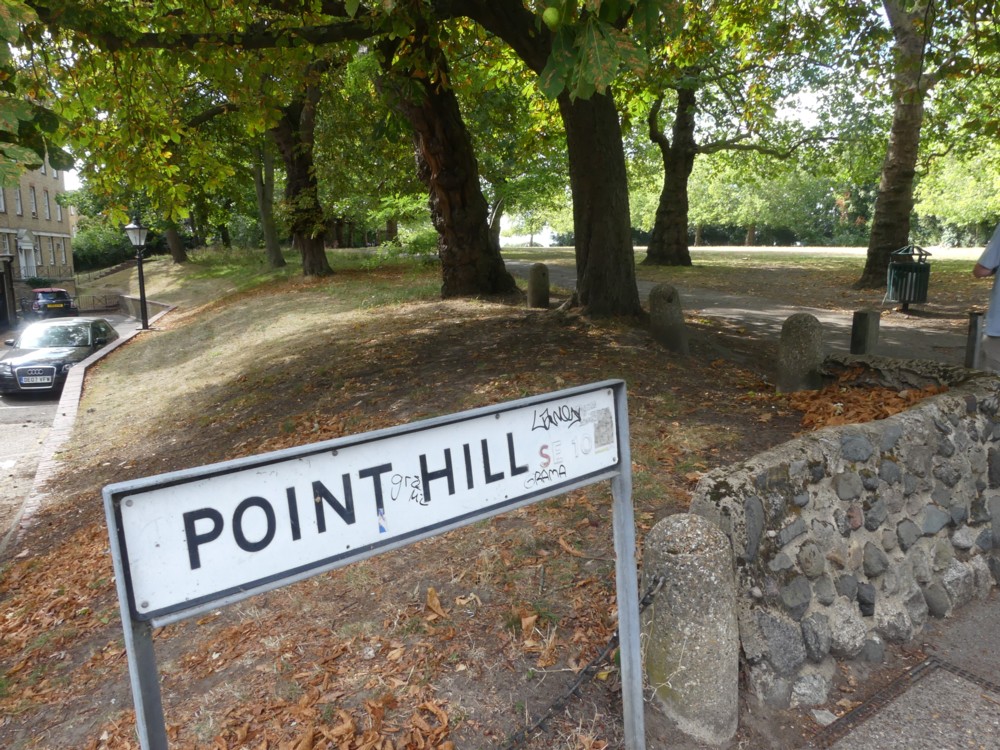
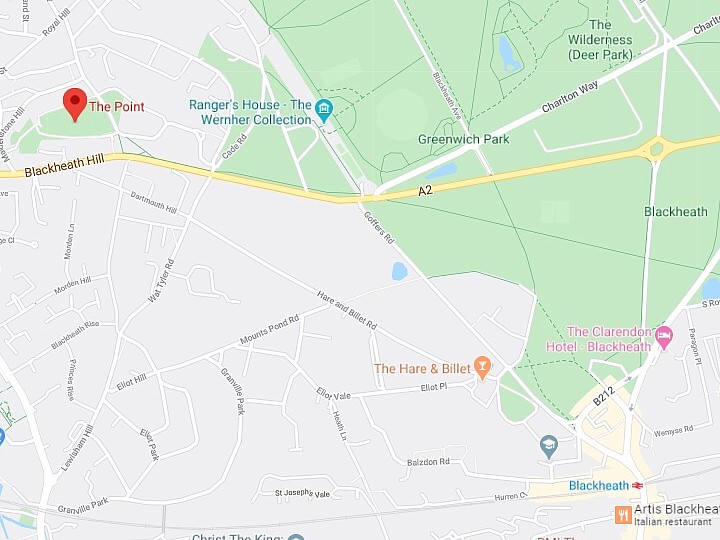
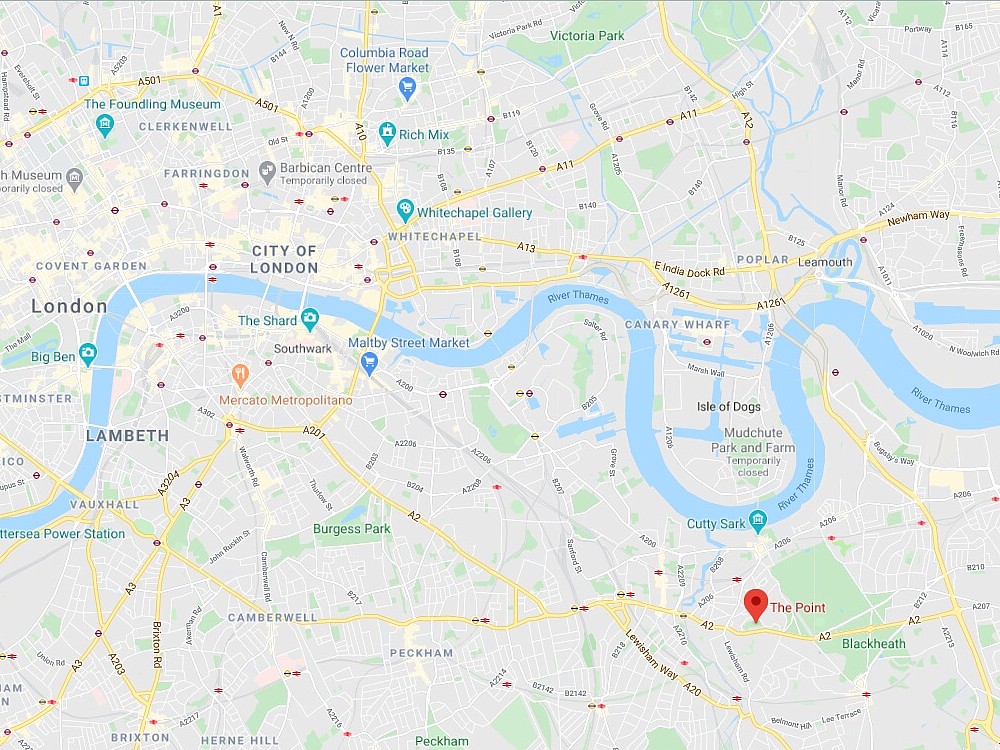
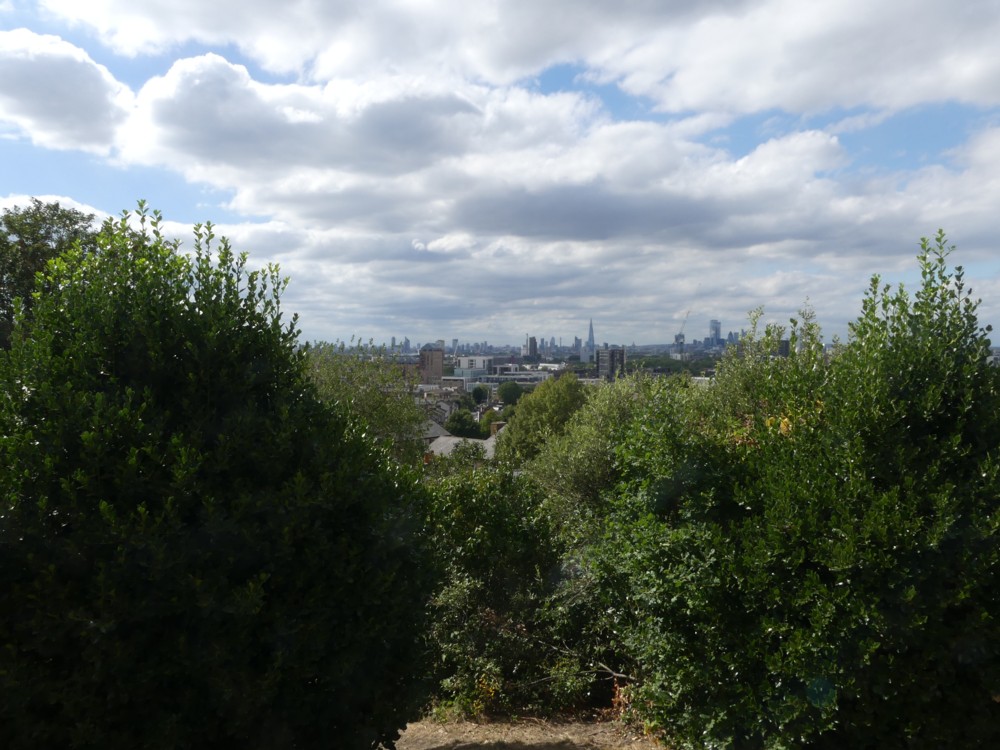
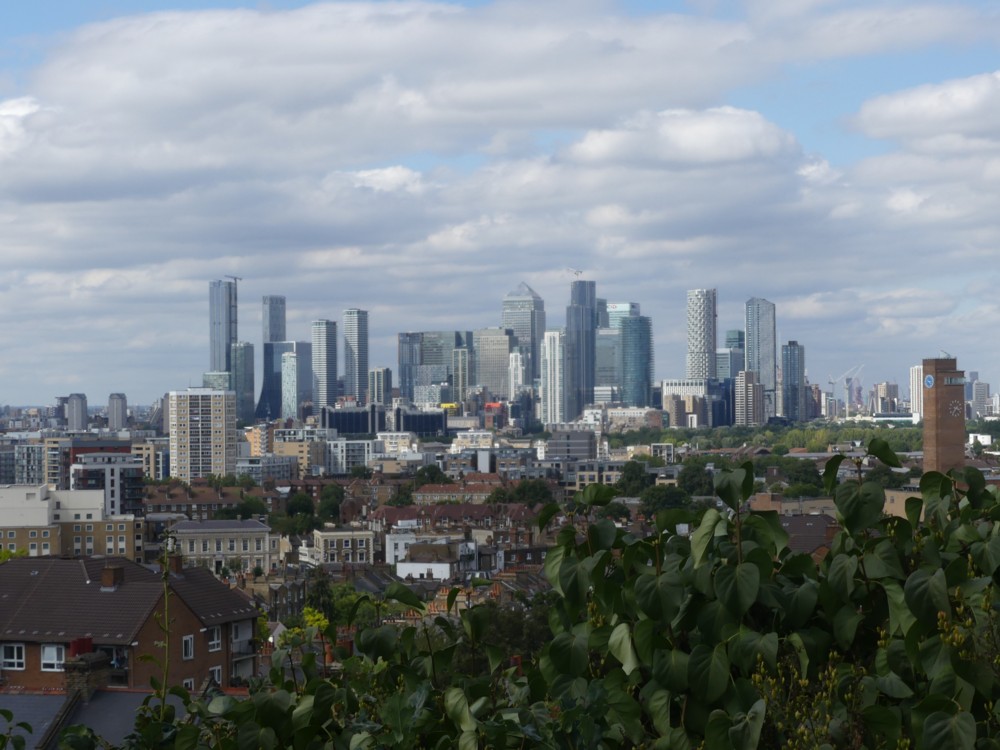


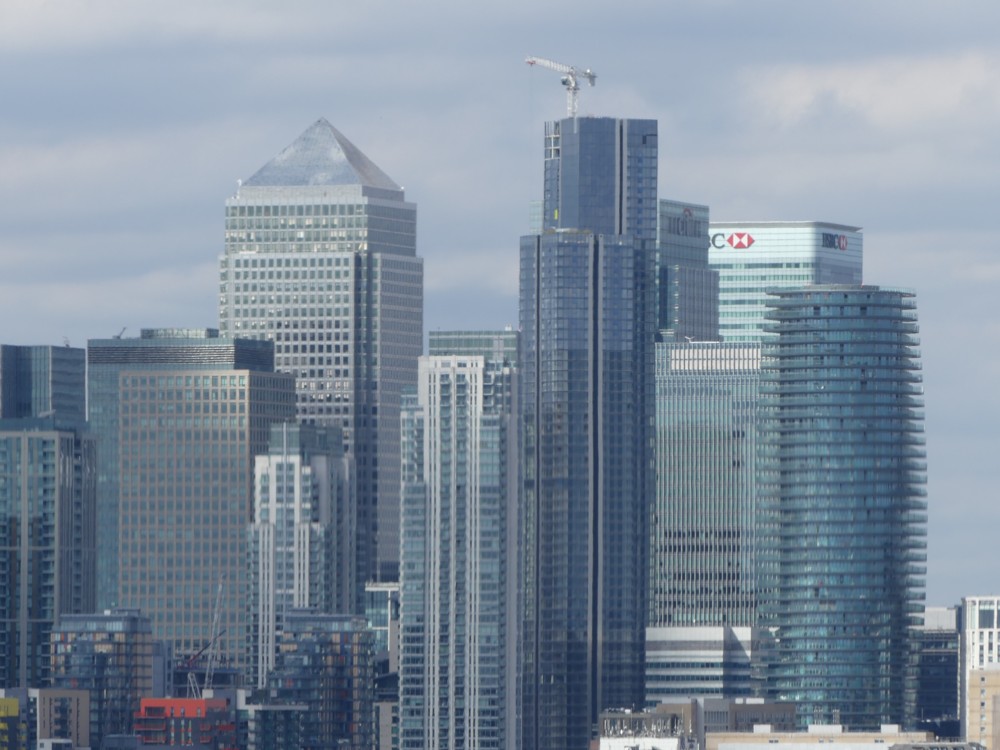
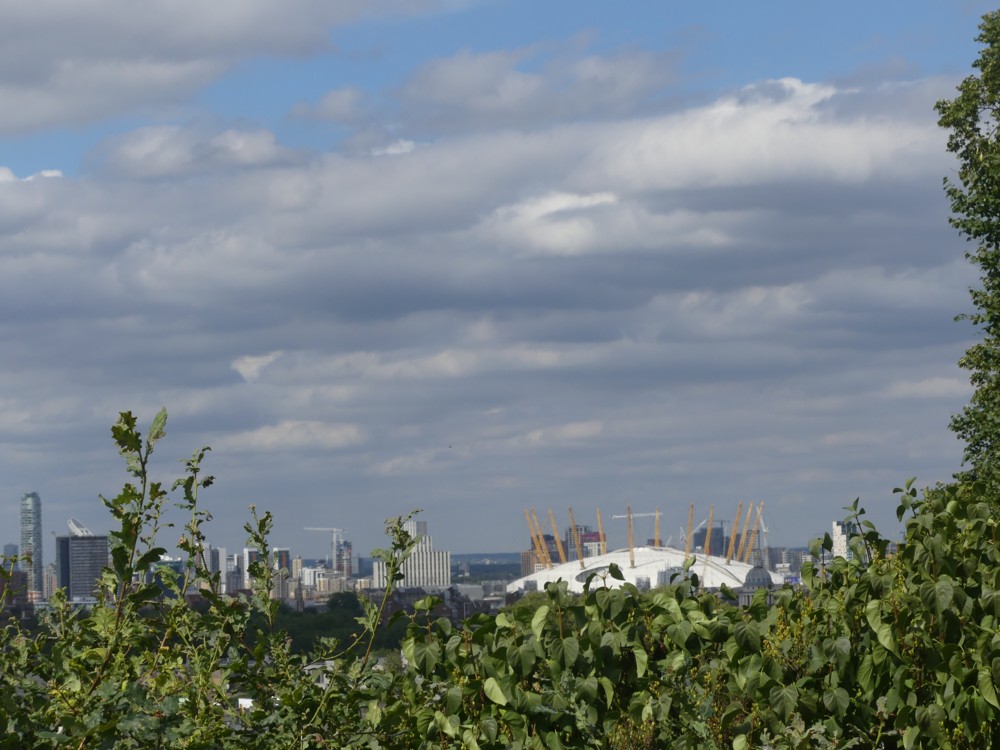
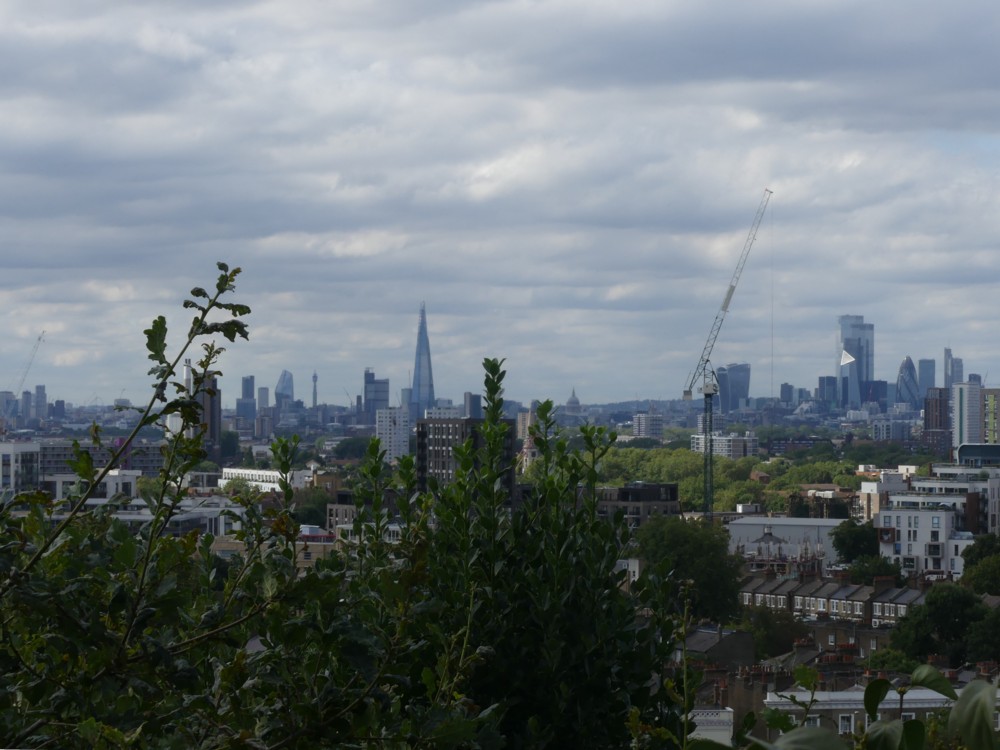
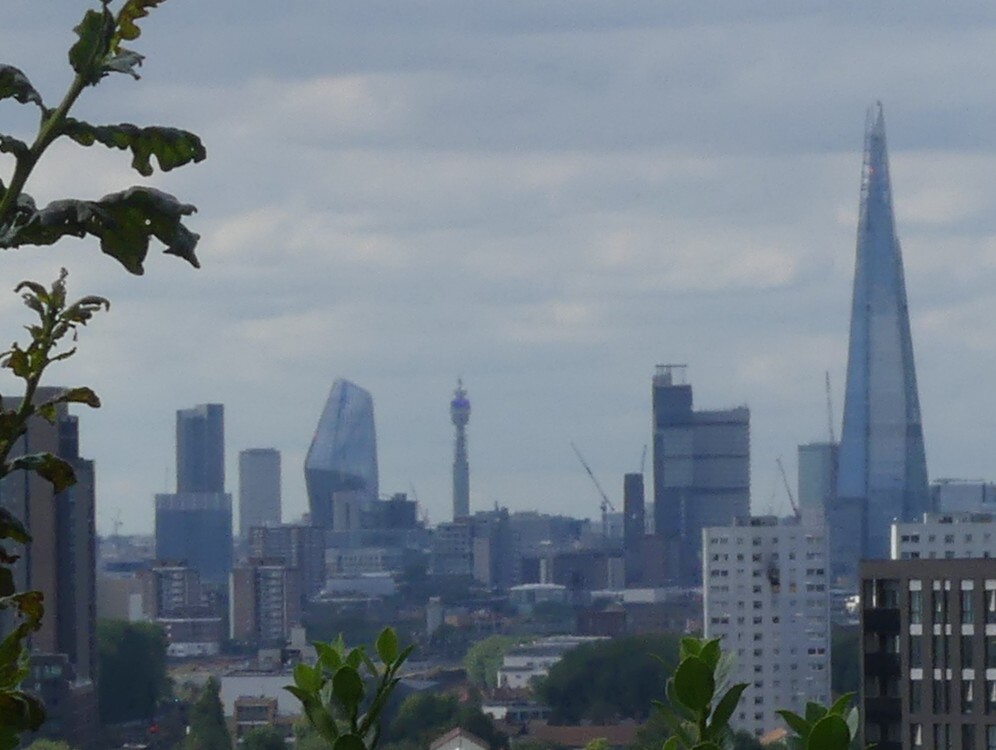
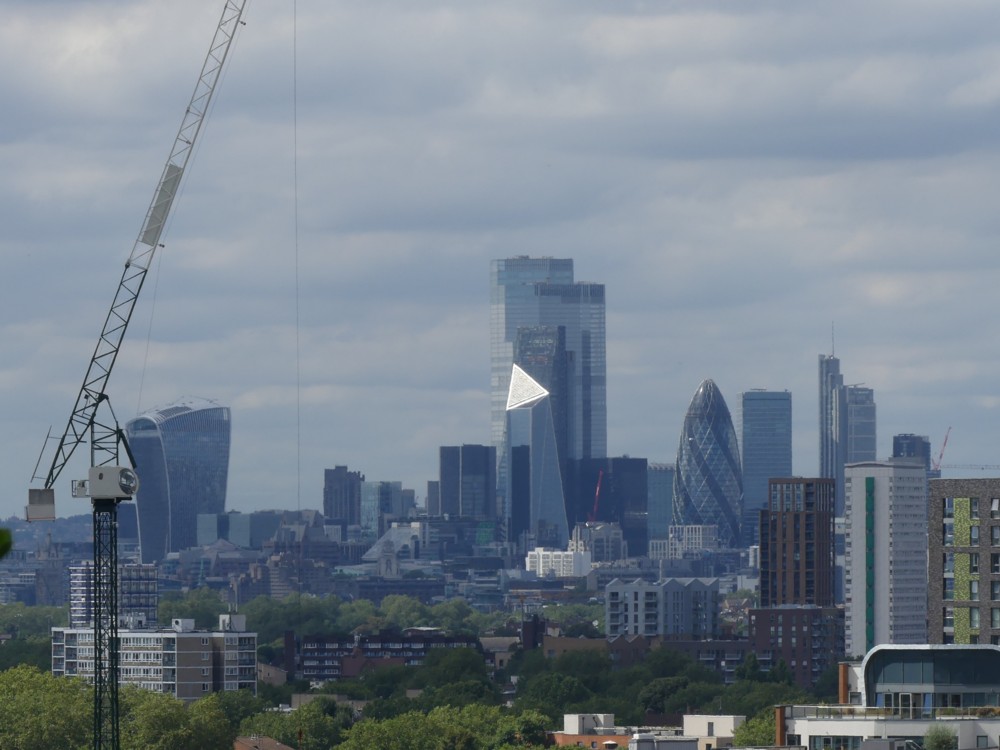
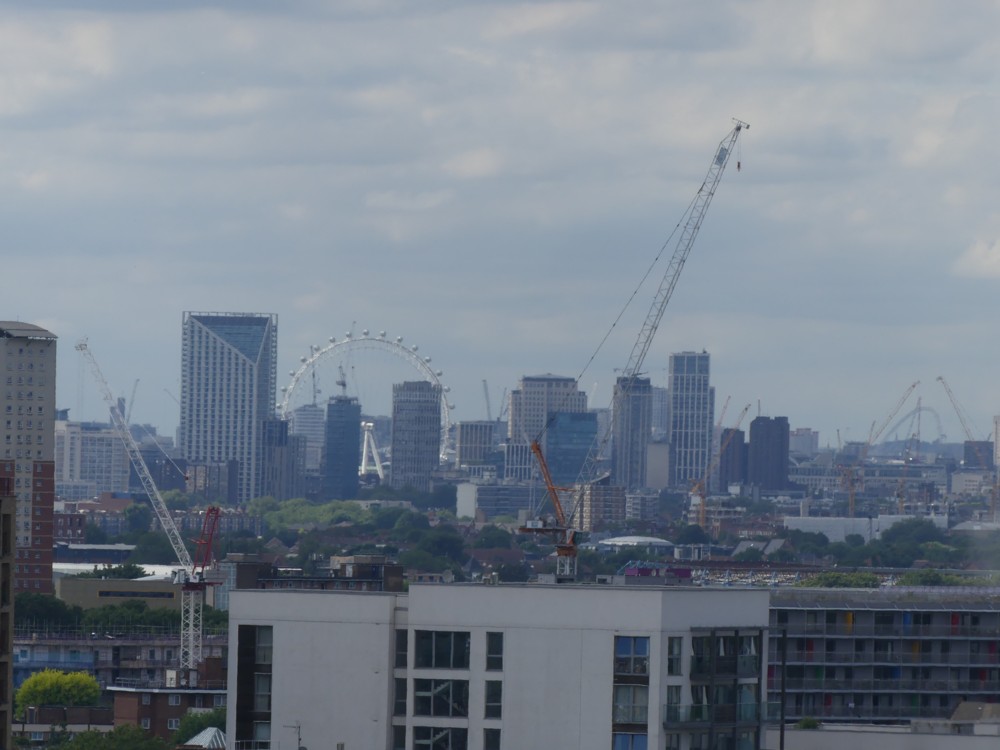
Brian, you mention there being a lot more towers at Canary Wharf than last time you went to The Point. By my count there are 12 which have topped out in the last 12 months, of which 11 are resedential rather than offices. Whilst ever since docklands’ modern development began under Margaret Thatcher there has always been plenty of residential property on the Isle of Dogs this is different in that the new towers are some of the tallest in the cluster. Given that as Michael Jennings has pointed out the offices of Canary Wharf are currently a ghost town and look likely to be permantly impacted by The Plague it will be very interesting to see as all these appartments are completed who ends up living in them and how long it takes for them to all be sold/rented.
Also I don’t think the “muddle” to the left of the Dome will be swallowed up by the Canary Wharf cluster any time soon. It is also mostly new, and still developing, almost completely residential, not as tall (perhaps around 20 stories rather than 50+), and so not as legible from a distance as the main cluster. But within it I think it is very interesting and it makes more sense viewed from across the river by the Dome. If you look through the Dome’s yellow supports in your picture you can see the coloured appartments on City Island that you like. It also contains a great thing which is the under construction replacement for Robin Hood Gardens, now half demolished despite the howls of protest of the most right-on architects who seem to think the hell of its actuality was justified by the naive good intentions of its designers. I drove through that area yesterday evening along the A13 from the East as the sun was going down and thought it magnificent! Happy to give you a walking tour of it at some point in the future if you wish.